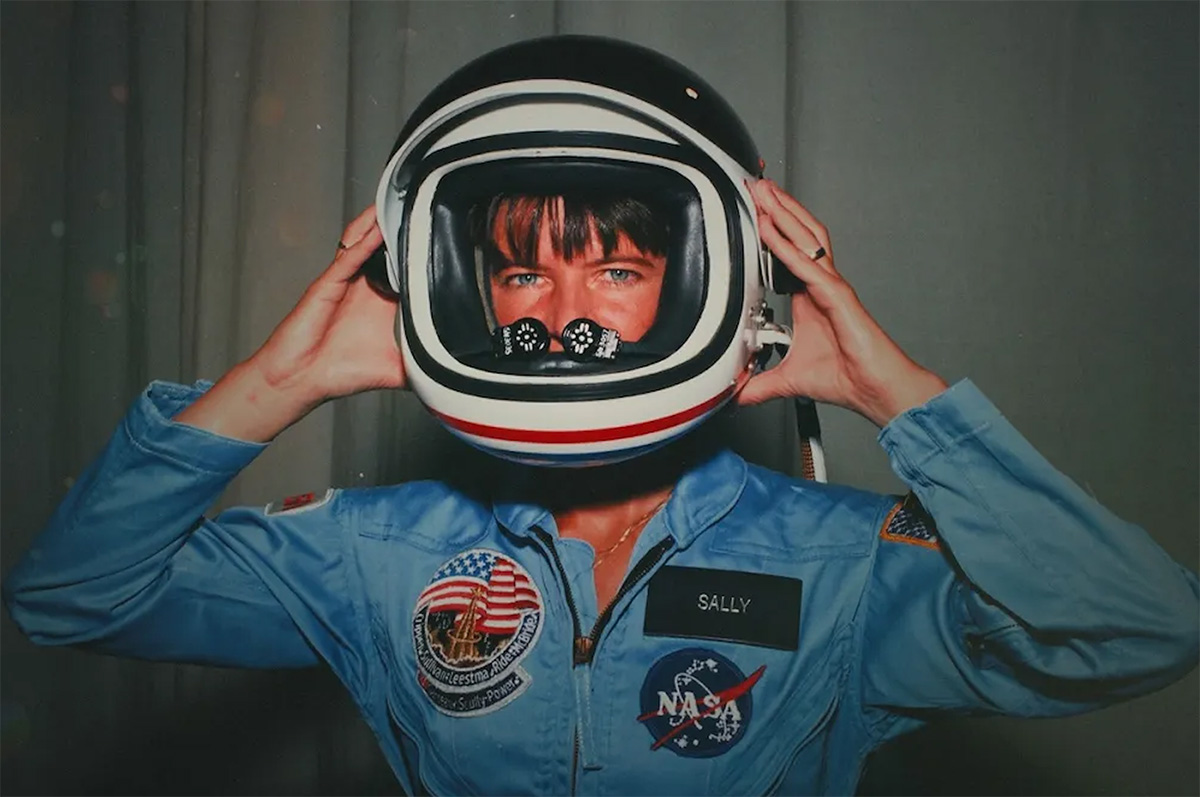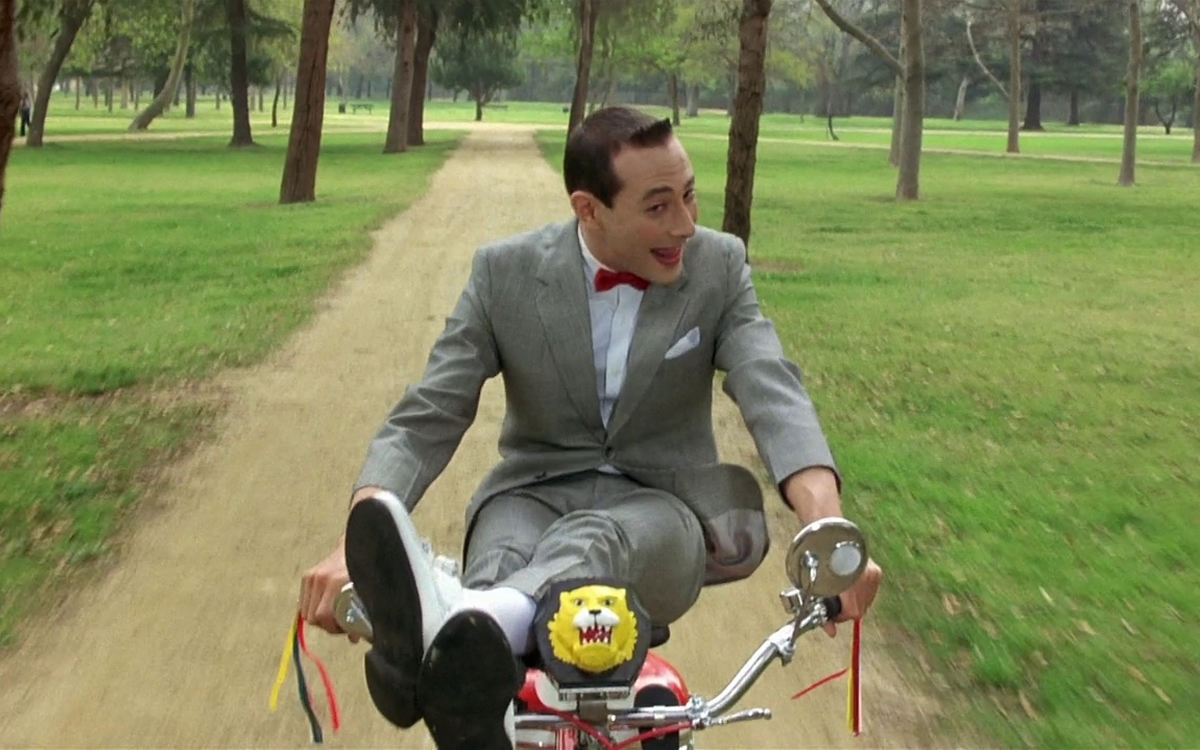Movies
Indie filmmaking is the gift that keeps giving this season
Jacob Elordi delivers strong performance in ‘On Swift Horses’

With all the anti-LGBTQ bias currently being forced down America’s throat by its own government, you might think that the coming season would be bringing us slim pickings when it comes to movies by, for, and/or about our community.
As the list of highlights we’ve compiled for you below clearly shows, you would be wrong. While there are few big studio offerings among them (are there ever?), we are happy to say that the blessing of indie filmmaking is a gift that keeps shining through, with several titles from outside the dominant mainstream system to pique your interest until the summer blockbusters come rolling out.
Young Hearts (March 14, limited release) A Belgian-Dutch co-production that racked up an impressive number of awards and prizes on the festival circuit, this queer coming-of-age story centers on a rural 14-year old (Lou Goossens) who befriends a new neighbor boy (Marius De Saeger) from the big city and finds himself falling in love for the first time. Described by its director (Anthony Schattemen, in his feature filmmaking debut) as a movie he “needed or wanted to see” in his own youth, it’s a queer-centered romance with universal appeal for viewers of all ages, who will easily recognize the strong emotions it evokes as it explores the struggle of of growing up while trying to discover your own identity. Goossens’ performance has been widely praised, as has Schatteman’s direction, and its suitability for family viewing makes it an even more appealing choice in a time when young queer people might be feeling particularly in need of positive messaging.
Pet Shop Days (March 14, limited release) Another European festival contender, this UK romantic thriller directed by Olmo Schnabel centers on an impulsive young immigrant (Darío Yazbek Bernal) who flees his wealthy Mexican family and lands in New York, where he becomes involved with a young pet shop clerk (Jack Irv) and is drawn into an underworld of crime and unrestrained vice. A sexy romance bolstered by the presence of several acclaimed screen veterans – including Willem Dafoe, Peter Saarsgard, and Emmanuelle Seigner – and with the prestige of a Venice Film Festival premiere behind it, it has a built-in appeal for queer cinema buffs.
A Nice Indian Boy (April 4) From Independent Spirit Award-winning director Roshan Sethi comes another touch of queer romance, though its premise – an Indian-American doctor (Koran Soni) falls in love with a white art photographer (Jonathan Groff) and takes him home to win the approval of his deeply traditional immigrant family – is arguably just as stressful as a crime drama set in the underbelly of NYC. Even so, it comes with a collection of enthusiastic reviews from its festival run, and offers a refreshing twist on the “culture clash” rom-coms that typically deliver the reverse ethnic dynamic when it comes to the challenge of bringing someone from outside the community to “meet the parents.” It also offers the charms of both Tony-winner Groff and Soni (“Abbott Elementary”), whose chemistry only enhances their “cute couple” appeal. Sunita Mani, Harish Patel, and Zarna Garg also star.
The Wedding Banquet (April 18) One of the highest-profile queer big screen prospects of the season is yet another rom-com, but this one is also a remake. Out gay Korean-American filmmaker Andrew Ahn (“Spa Night,” “Fire Island”) helms a reinvention of Ang Lee’s now-classic “marriage-of-convenience” comedy of the same name in which two same-sex couples (Bowen Yang and Han Gi-Chan, Lily Gladstone and Kelly Marie Tran) concoct a “lavender wedding” for a green card in exchange for in vitro fertilization, only to find themselves trapped into an elaborate, traditional Korean marriage ceremony by the closeted-at-home groom’s revered grandmother (Oscar-winner Youn Yuh-jung). Well received at its Sundance premiere earlier this year, and also featuring acclaimed veteran actress Joan Chen (“Lust, Caution,” “Twin Peaks,” “Didi”) as the mother of the bride, this one has serious potential to become the must-see rom-com – queer or otherwise – of the season.
On Swift Horses (April 25) A literary adaptation – from the eponymous novel by Shannon Pufahl – set in post-Korean War California, this romantic drama revolves around a returning veteran (Will Poulter) eager to start a brand new life with his bride (Daisy Edgar-Jones); when his younger brother (Jacob Elordi) joins them, the trio form a family together – but both bride and brother have secret desires that remain unmet, leading each to explore their individual romantic and sexual impulses and threatening to pull the happy household apart. Highly touted after its 2024 Toronto Film Festival premiere, this one reportedly boasts “it” boy Elordi’s strongest performance to date (along with some steamy scenes shared with Diego Calva as his clandestine lover) and gives equal time to the ladies by pairing Edgar-Jones with Sasha Calle as her own secret same-sex flame. Along with “The Wedding Banquet,” this is probably the most-anticipated queer movie of the year so far. Directed by Daniel Minahan.
Lilies Not for Me (TBA) Though its release date hasn’t been set yet, this multinational production from first-time director Will Seefried is worth watching out for. Another period piece, this one follows an aspiring novelist (Fionn O’Shea) in 1920s England who enters a medical facility to undergo “conversion therapy” for his homosexuality. It might sound like a horror film, but it’s really a drama that unwinds the complex psychological process of coming to terms with your sexual identity, and the connections between past, present, and future which trace the path toward acceptance. Also starring Erin Kellyman, Robert Aramayo, Louis Hoffman, and Jodi Balfour.
Movies
Queer movies and shows to watch this summer
‘Brokeback’ returns, a Sally Ride doc, and much more

Summer is upon us, and so is Pride month, which means a whole crop of queer-flavored movies and shows are ready to blossom onto our nearest screen over the next few weeks; and as always, the Blade is here with a handy guide to help you fill out your watchlist.
I Don’t Understand You
First up is this pitch-black horror comedy starring Nick Kroll and Andrew Rannells as a gay American couple (and soon-to-be-adoptive-daddies) celebrating their 10th anniversary with a trip to Italy. Unfortunately, neither of them speaks Italian, and the resulting language barrier creates a series of mishaps and misunderstandings that turns their dream vacation into a farcical traveler’s nightmare. Co-created by real-life gay couple Brian Crano and David Joseph Craig (who also directed), it’s got an authentic queer voice behind it, and a pair of talented and funny lead actors to make it work; it’s also got a nice collection of good reviews behind it from its debut at 2024’s SXSW and other festivals, which makes it a strong opener for your summertime slate. 6/6, in theaters
Loulou
Directed by Noëlle P. Soulier, this thoughtful trans coming-of-age/coming-out story centers on a closeted 17-year-old teen (Kevin Curtis) struggling with her identity while trying to cope with harassment at school and the pressure of living with her strict Catholic parents (Desean Terry and Reiko Aylesworth). Pushed to the church, she finds unexpected solace, encouraging her to start a journey toward self-acceptance – something that includes a new relationship with her own ex-bully (Spencer Belko), who has been struggling with some identity issues of his own. Also starring Patrika Darbo as a sympathetic nun, this gentle story about trans experience seems like a welcome beacon of support at a time when we really need one. 6/6, VOD
Sally
Directed and produced by Cristina Costantini, this documentary from National Geographic explores the life and career of Sally Ride, who became the first American woman to blast off into space. It’s not just the story of her historic achievement, however, but the story of her 27-year romance and relationship with life partner, Tam O’Shaughnessy, who reveals the full personal journey of America’s LGBTQ astronaut for the very first time. 6/16, NatGeo; 6/17, Hulu, Disney+
Brokeback Mountain
No, that’s not a misprint and you’re not having a flashback to 2005, because the game-changing Ang Lee-directed drama about two cowboys in love is returning to theaters for a series of special screenings to celebrate its 20th anniversary. If you’re anything like us, you probably “wish you could quit” this powerful, heartbreaking, and tragically beautiful masterpiece – but we all know we never will. Why not celebrate that special bond by seeing it again on the big screen? Beginning 6/20, in theaters
The Gilded Age (Season 3)
Back for another round of sumptuously costumed, lavishly decorated intrigue among the ostentatiously wealthy high society class of late 19th-century New York (and those entangled in their world), the newest installment of this intrinsically queer period soap opera finds a definite shift in dynamics taking place after last season left the major players of the “old guard” weakened and the social-climbing “new money” crowd poised to take their place at the top of the pecking order. Promising the return of its sprawling cast – which includes queer fan favorites like Christine Baranski, Cynthia Nixon, Carrie Coon, Nathan Lane, and more, not to mention an ever-expanding host of Broadway greats to fill out the supporting cast and guest star roster – as well as the savvy perspective of show creator Julian Fellowes (“Downton Abbey,” which also returns later this year for a swan song on the big screen) to ensure its status as both artful social observation and “guilty pleasure” escapism, it’s probably already on your list if you’re a fan. If you’re not, there’s still time to catch up with the first two seasons before this one drops. 6/22, HBO Max
King of Drag
Move over, RuPaul, because the first major Drag King competition series is making its debut on queer streaming service Revry, where it plans on “serving you bold, brilliant, and unapologetic talent like never before” and celebrating “masculinity in all its forms.” Hosted by legendary trans New York drag king Murray Hill, it will feature regular judges Gottmik, Sasha Velour, Tenderoni, Wang Newton, and Revry co-founder Damian Pelliccione, as well as a list of guest judges that includes Jackie Beat, Cole Escola, Landon Cider, Lisa Rinna, and more. 6/22, Revry
Ironheart
Queer Marvel fans will certainly be on board for this new miniseries from the MCU, which is set after the events of the film “Black Panther: Wakanda Forever” and follows young genius inventor Riri Williams (Dominique Thorne) as she embraces her evolution into the titular superhero in her hometown of Chicago. Reportedly establishing the lead character as bisexual, the series (created by Chinaka Hodge) also continues the Marvel franchise’s efforts toward diversity and inclusion with the introduction of a transgender character and the casting of transmasculine actor Zoe Terakes and “Drag Race” star Shea Couleé in supporting roles. “Hamilton” and “In the Heights” star Anthony Ramos co-stars as Parker Robbins (aka “The Hood”). 6/24, Disney+
The Ultimatum: Queer Love (Season 2)
For fans of reality TV competition, this popular show – a spin-off from “The Ultimatum: Marry or Move On” – returns with a set of six new couples (made up of women and non-binary people), who must put their love to the test by moving in with other partners to determine if they’re ready for marriage — or simply ready for someone else. 6/25, Netflix
Hot Milk
Adapted from the 2016 novel by Deborah Levy, this coming-of-age drama from filmmaker Rebecca Lenkiewicz follows Sofia (Emma Mackey) as she accompanies her domineering, wheelchair-bound mother (Fiona Shaw) to a questionable clinic in Spain in search of treatment, and is tempted by a tantalizing new life in the form of a local seamstress (Vicky Krieps). With a literary pedigree to balance its air of soft-core steaminess, this one appeals to us on the basis of its captivating cast alone. 6/27, limited theaters
M3GAN 2.0
The hot movie ticket this summer is likely to be for this sequel to 2022’s campy comedic cult horror hit, in which a murderous rogue AI-powered doll goes on a rampage after becoming self-aware before being destroyed – or at least, apparently. Three years later, M3GAN’s creator (Allison Williams) is now an advocate for oversight on Artificial Intelligence, but when a new and deadly android (Ivanna Sakhno) is created as a military weapon from her stolen plans, she must risk resurrecting her original invention in order to stop an even greater threat to humanity. Violet McGraw returns as Williams’ now-teenaged niece, as do Amie Donald and Jenna Davis as the title character’s body and voice, respectively. 6/27, in theaters
Ponyboi
Highly anticipated is this neo-noir thriller from director Esteban Arango, written by and starring intersex actor, filmmaker, and activist River Gallo, which is finally getting a theatrical release nearly a year and a half after its acclaimed debut at the 2024 Sundance Festival. Adapted and expanded from a 2019 short film by Gallo, it follows a young intersex sex worker (Gallo), whose messy personal life – his best friend (Victoria Pedretti) is pregnant, and the father is his own pimp/boyfriend (Dylan O’Brien) – gets even messier when a drug deal gone bad puts him on the run from the mob. Gallo’s performance has earned copious praise, and the fact that it’s a whole movie centered on an intersex person – surely a rarity, if not a first, in commercial American filmmaking – makes it even more of a must-see. 6/27, in theaters
Sorry, Baby
Another Sundance favorite makes its way to theaters in the form of this dark comedy-drama from first-time writer/director/star Eva Victor, who plays Agnes, a woman still recovering from a sexual assault by a trusted figure in her past, who has tried to move on but realizes how “stuck” she still is after a close friend makes a milestone announcement. Despite the heavy subject matter, it’s earned its acclaim – and the resultant buzz that enticed top flight distributor A24 to snap up the rights – by approaching it with a hefty dose of absurdist humor, as it peels back the onion of the “bad thing” that happened to finally set Agnes on a course toward healing through a series of five “chapters” in her life. It’s been described as a “trauma-dy” – and frankly, we think that’s enough to make it irresistible. 6/27, in theaters
Freakier Friday
You might be tempted to say this is the sequel that nobody asked for – but you know you’re going to be there for it. The perennial parent/child identity swap franchise (spawned by a sharp-witted novel from Broadway royalty Mary Rodgers) reinvents itself yet again with the return of Jamie Lee Curtis and Lindsay Lohan as a mother and daughter who, decades after having swapped bodies due to a mystical incident involving a fortune cookie, find themselves once again switching places on the eve of a milestone wedding. We have no idea if there’s any queer-relevant story elements here; we just know most of us will be fully on board, if only for the nostalgia and the undying appeal of its queer-fan favorite stars. 8/8, in theaters
Lurker
Touted as “a screw-turning psychological thriller made for the moment” and directed by Alex Russell (writer/producer of the acclaimed shows “The Bear” and “Beef”), this dark pop cultural commentary focuses on a young LA loner (Théodore Pellerin) who has a chance encounter with a rising pop star (Archie Madekwe) and uses it to infiltrate his “entourage” – only to find himself caught up in an ever-escalating competition for attention, access, and proximity to “fame” that soon becomes “a matter of life and death.” A buzzy, paranoid, and grimly exhilarating exploration of the music industry, fandom, and “our universal search for validation,” this creepy but enticing suspenser scores extra points from us for leaning into a homoerotic subtext and serving up the sweaty wrestling scenes to prove it. 8/22, in theaters
Honey Don’t!
The second of a planned “Lesbian B-Movie Trilogy” from filmmaker Ethan Coen and his wife Tricia Cooke (which began with last year’s “Drive Away Dolls”), this neo-noir-ish dark comedy stars Margaret Qualley (“The Substance”) as a lesbian private eye who is led by a case into a series of strange deaths centered around a mysterious church. It’s the kind of movie for which the less you know about it, the better it probably plays, so we won’t say much more – except that its cast includes heavyweights Aubrey Plaza, Billy Eichner, and Chris Evans. We say, “honey, DO.” 8/22, in theaters
Twinless
Coming on the cusp of fall, filmmaker James Sweeney’s eagerly awaited black comedy (do we detect a common thread in this summer’s selection, or is it just us?) is yet another Sundance darling, bolstered even further by the controversial gay sex scenes that were leaked online by fans of teen-heartthrob-turned-A-lister Dylan O’Brien (playing gay again for his second appearance on our list), who co-stars with Sweeney himself in this oddball story about two young queer men who meet in a support group for bereaved twins and form a sexually intense friendship with each other. Praised by critics for its “seamless” integration of queer themes into a compelling (if unusual) narrative, there’s been a lot of delay and reshuffled plans around its official release date – but now it’s officially set to be our final treat for a summer full of queer entertainment. 9/5, in theaters
Movies
‘Pee-wee’ spills the tea in outstanding new documentary
Reubens’s sexuality emerges as the show’s focus

Most of us who have lived long enough to get nostalgic for our formative years have, by now, watched enough documentaries about a beloved entertainment icon from our past to know what to expect when a new one comes along.
Such offerings are typically slick biographical portraits blending archival material with newly filmed “talking head” reminiscences and commentaries, and perhaps punctuated by eye-catching animations or other flourishes to add an extra layer of visual interest; heavy on the nostalgia and mostly reverent in tone, they satisfy us with pleasant memories, supplement our knowledge with behind-the-history insights and revelations, and leave us – ideally – with a renewed appreciation and a reinforced feeling of comfortable familiarity. Many of them are little more than retrospectives, more glossy tribute than in-depth profile; occasionally, a few go beyond the surface to give us a deeper sense of personal connection with their subject – but rarely enough, even in the best of them, to make us feel as if we know them well.
No matter how many of these docs you have seen, however, or jaded your expectations may be when you approach it, “Pee-wee as Himself” is still going to surprise you.
Directed by filmmaker Matt Wolf, the two-part HBO docuseries – which premiered May 23 and is now streaming on Max – is built around material culled from 40 hours of interview footage with the late Paul Reubens (the creator and performer behind nerdy, manic cultural phenomenon and children’s show host “Pee-wee Herman,” for anyone that needs to be told), and conducts a “guided tour” of Reubens’ singular career in the limelight. The first installment traces a path from his Florida childhood through his early adventures as an actor and performance artist in Los Angeles to his rapid rise to fame and the popularity of his carefully crafted alter-ego; part two continues the story to explore the expansion of his fame through the phenomenon of “Pee-wee’s Playhouse,” but soon shifts gears to cover his sudden fall from grace after a notorious “public indecency” arrest in an adult theater, and the subsequent accusations of collecting “child pornography” that unfairly branded him as a pedophile in the public eye — and comes full circle to document his return to favor as an underdog hero for the generation that had grown up watching him.
Besides its detailed chronicle of these already-well-known chapters in Reubens’ life, however, Wolf’s doc (and Reubens, via frequent commentary throughout) delves into publicly uncharted territory to give us a look at something we’ve never been allowed to see before: Paul Reubens himself.
That includes, of course, removing any ambiguity that might remain about the sexuality of the man behind the bow tie, who never publicly identified as gay before his death from cancer in 2023. It’s not so much a “coming out” — after all, he artfully teased his queerness to fans for years — as it is a dropping of pretense. There’s no need for a definitive statement announcing something that everybody already knew, anyway.
That’s not to say he skirts the issue as he delivers his full-frame close-up testimonial to the camera; on the contrary, he reflects often and with bittersweet candor about the carefully-managed matter of his sexuality – or the public’s perception of it, at any rate – with the matter-of-fact eloquence of someone who’s spent a lot of time thinking about it. He openly discusses his choice to keep the closet door closed on his personal life in order to preserve Pee-wee’s ambiguously wholesome yet irresistibly subversive persona in the public’s imagination, and to abandon his openly queer life (as well as a loving long term relationship, one of the series’ biggest “reveals”) to do so.”I was as out as you could be,” he reflects with rueful irony, “and then I went back in the closet.”
Indeed, it’s Reubens’s sexuality that ultimately emerges as the show’s core focus — even more than the rich treasure trove of personal photos, home movies, behind-the-scenes footage, and all the other fan-thrilling delights it provides — and gives it a larger significance, perhaps than even the man himself. It’s a thread that runs through his story, impacting his choices and the trajectory of his career, and reflecting the familiar shared experience of many audience members who may be able to relate; later, it manifests on a societal level, as Wolf and his subject explore the homophobic attitudes behind the legal persecution that would bring his rising star into a tailspin and hang over his reputation for the rest of his life. It serves as both a reminder of the power of cultural bigotry to repress queerness and a cautionary tale about the personal cost of repressing oneself.
A good number of Reubens’ longtime friends (like Cassandra Petersen, aka “Elvira, Mistress of the Dark,” “Buffy the Vampire Slayer” costar David Arquette, and former “girlfriend” Debi Mazar, who provided support, acceptance, and companionship in the wake of his legal troubles) come along for the ride, offering their own reminiscences and insights into the official record, as well as lesser-known members of an inner circle that comprised the late artist’s chosen family. Yet all these testimonials, authentic as they may be, are not what enable “Pee-wee as Himself” to bring us closer to the real Paul Reubens. It’s Reubens himself who does that.
Maintaining an ambiguously hostile edge in his interviews, bringing to light a clash for control between himself and director Wolf with as much clarity as he illuminates the vast archival material that is shown to document his career, he demonstrates firsthand the need to manage his own narrative, balking at, even openly resisting, certain questions and interpretations that arise throughout. It gives the real Reubens the same vague menace with which Pee-wee was also infused — and also creates a sort of meta-narrative, in which the conflict between subject and director must also be resolved before the story can truly achieve closure, calling into question whether Reubens (a veteran of avant-garde theater and lifelong fan of the circus) might not be adding yet another layer of mystery and performance to his image even as he gets honest publicly for the very first time.
That closure eventually comes in the form of a voice recording made by Reubens the day before his death — after a six year battle with lung cancer (he was a heavy smoker, another personal detail he painstakingly hid from the public) which, save for those in his innermost circle, he never revealed until the end — in which he delivers a final message to the world. With it, he finally accomplishes what he never could during his life, and lets us see, at last, who he was when he wasn’t being Pee-wee.
And it’s a beautiful thing.
Movies
Gay director on revealing the authentic Pee-wee Herman
New HBO doc positions Reubens as ‘groundbreaking’ performance artist

In the new HBO two-part documentary, “Pee-wee as Himself,” director Matt Wolf gives viewers a never-before-seen look into the personal life of Paul Reubens, the comedic actor behind the much loved television persona, Pee-wee Herman.
Filmed before Reubens passed away in 2023 from cancer, Wolf and his creative team created the riveting documentary, interspersing several interviews, more than 1,000 hours of archival footage, and tens of thousands of personal photos.
Determined to set the record straight about what really happened, Reubens discussed his diverse influences, growing up in the circus town of Sarasota, Fla., and his avant-garde theater training at the California Institute of the Arts.
Ruebens joined the Groundlings improv group, where he created the charismatic Pee-wee Herman. He played the quirky character during the Saturday morning show, “Pee-wee’s Playhouse,” and in numerous movies, like “Pee-wee’s Big Adventure” and “Big Top Pee-wee.” He also brought Pee-wee to Broadway, with “The Pee-wee Herman Show.”
To get an enigma such as Reubens to open up was no easy task for Wolf.
“I felt determined to get Paul to open up and to be his authentic self,” acknowledged Wolf at a recent press conference. “And I was being tested and I wanted to meet my match in a way so I didn’t feel frustrated or exhausted, I felt determined but I also, it was thrilling to go this deep. I’ve never been able, or I don’t know if I ever will, go this deep with another human being to interview them in an intimate way for over 40 hours.”
Wolf described the collaborative interview experience as a dream, “like we were in a bubble where time didn’t matter.” he also felt a deep connection to the material, having come of age watching “Pee-wee’s Playhouse.”
“I wouldn’t have been able to put words to it at the time, but I think it was my first encounter with art that I felt emotionally involved in,” noted Wolf.
“He continued: “I recognize that that show created a space for a certain kind of radical acceptance where creativity thrives. And as a gay filmmaker, I also recognize things like Pee-wee Herman marrying a bowl of fruit salad at a slumber party or dancing in high heels to the song, ‘Fever.’ That stuff spoke to me. So that was my connection to it.”
During the documentary, Reubens comes out as a gay man.
“Paul went into this process wanting to come out,” said Wolf. “That was a decision he had made. He was aware that I was a gay filmmaker and had made portraits of other gay artists. That was the work of mine he was attracted to, as I understood. And I wanted, as a younger person, to support him in that process, but he also was intensely sensitive that the film would overly emphasize that; or, focused entirely from the lens of sexuality when looking at his story.”
Their complicated dynamic had an aspect of “push and pull” between them.
“I think that generational difference was both a source of connection and affinity and tension. And I do think that the level to which Paul discusses his relationships and intimacy and vulnerability and the poignant decision he made to go back into the closet. I do have to believe to some extent he shared that because of our connection.”
Wolf hopes that the “Pee-wee as Himself” positions Reubens as one of the most “groundbreaking” performance artists of his generation who in a singular way broke through into mainstream pop culture.
“I know he transformed me. He transformed how I see the world and where I went as a creative person. And it’s so clear that I am not alone in that feeling. For me, it was fairly abstract. I couldn’t necessarily put words to it. I think people who grew up on Pee-wee or were big fans of Pee-wee, seeing the film, I hope, will help them tap into intangible and specific ways how transformative his work was for them. It really is a gift to revisit early seminal experiences you had and to see how they reverberate in you.”
He added: “So, to me, this isn’t so much about saying Paul Reubens is a genius. I mean, that’s overly idealizing and I don’t like hero worship. It’s more about understanding why many of us have connected to his work and understanding where he lives within a legacy of performance art, television, and also, broader pop culture.”
-

 The White House3 days ago
The White House3 days agoWhite House has ‘no plans’ to recognize Pride month
-

 District of Columbia2 days ago
District of Columbia2 days agoD.C. church removes Pride decorations from house rented to gay tenants
-

 District of Columbia4 days ago
District of Columbia4 days agoD.C. police chief rescinds request to close Dupont Circle Park for WorldPride
-

 Opinions3 days ago
Opinions3 days agoMaking sense of a dark Pride season













